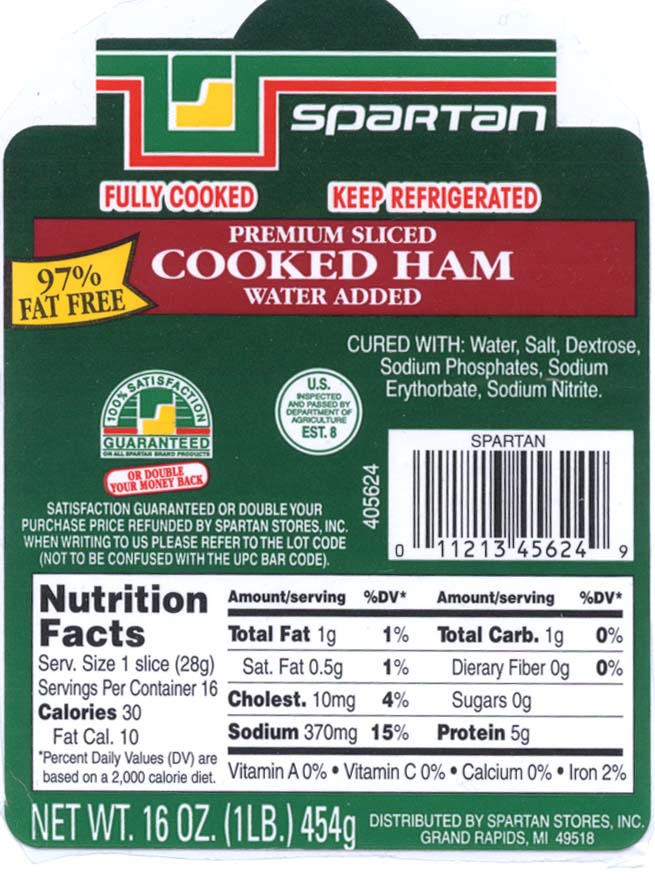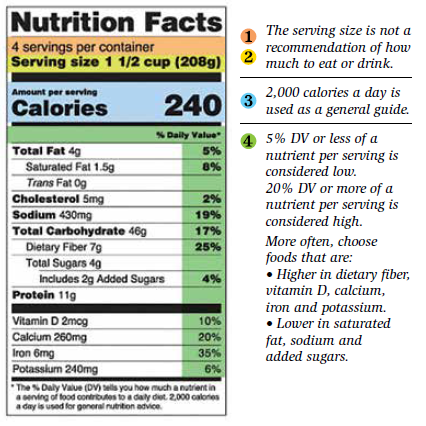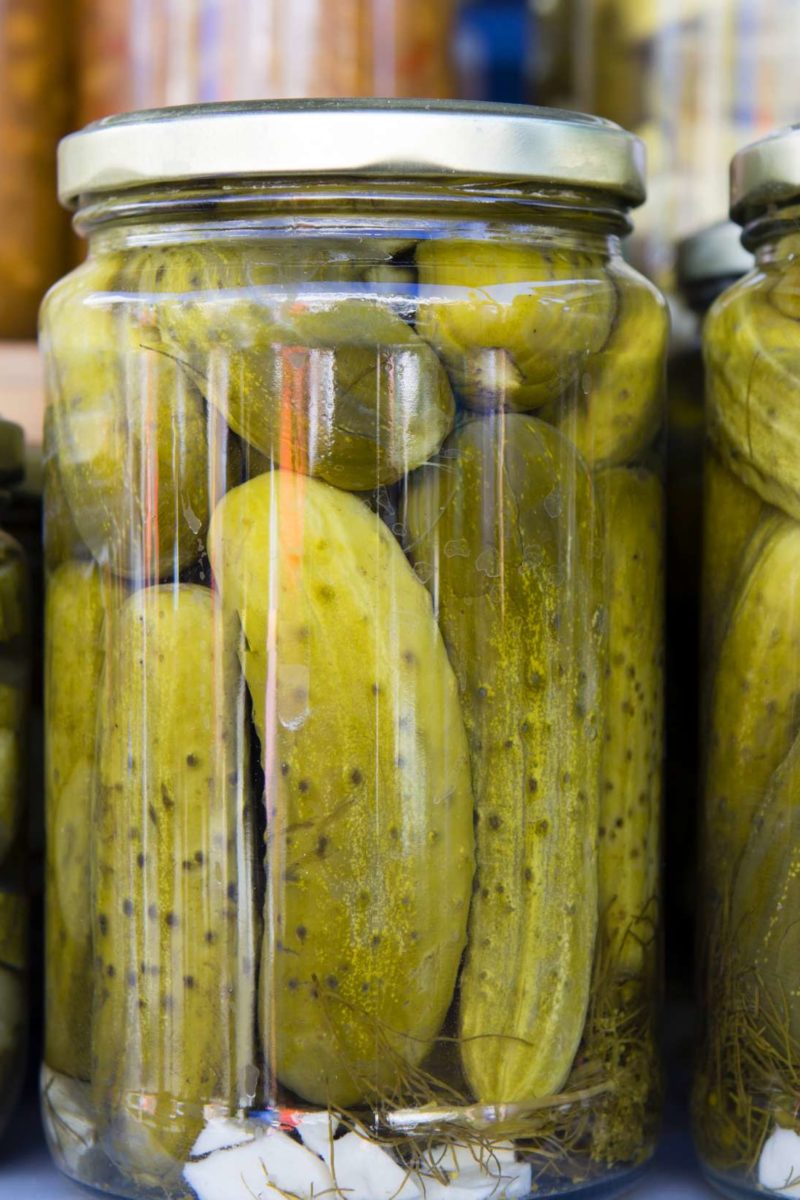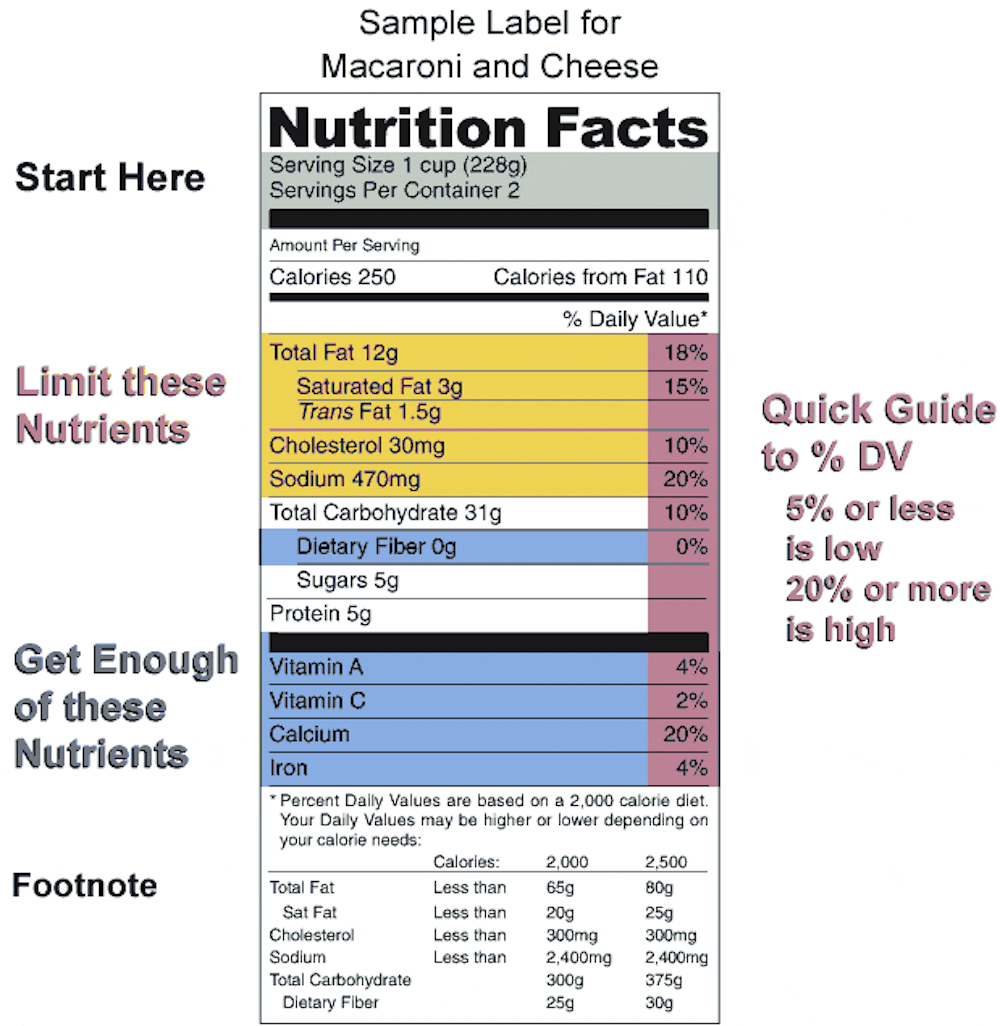43 what are calories on food labels
How to read food labels: MedlinePlus Medical Encyclopedia If you eat 2 cups (0.48 liters) at a meal, you are eating 2 servings. That is 2 times the amount of the calories, fats, and other nutrients listed on the label. Calorie information tells you the number of calories in 1 serving. Adjust the number of calories if you eat smaller or larger portions. Understanding Ingredients on Food Labels - American Heart Association Understanding Ingredients on Food Labels. Food labels are an important source of information about calories and the nutritional value of the foods you eat, a crucial tool in building a heart-healthy diet. The Nutrition Facts information is always displayed in the same orderly fashion and helps you understand how much of certain nutrients that ...
Reading Food Labels (for Parents) - Nemours KidsHealth The information on food labels is based on an average diet of 2,000 calories per day. But the actual number of calories and nutrients that kids need will vary according to their age, weight, gender, and level of physical activity. (For more guidance, check out the USDA's MyPlate .) Total Fat

What are calories on food labels
How To Read A Food Nutrition Label | Gobble For example, the USDA recommends that most people get 1,000 mg of calcium per day. So, if a serving of food contains 100 mg of calcium, this means the serving contains 10% Daily Value of calcium. The same applies to items on the food label you may want to avoid, like fat and cholesterol. For example, 15 grams is 20% Daily Value for total fat. Understanding Food Nutrition Labels | American Heart Association Mar 06, 2017 · Remember that the information shown in the label is based on a diet of 2,000 calories a day. You may need less or more than 2,000 calories depending upon your age, gender, activity level, and whether you’re trying to lose, gain or maintain your weight. When the Nutrition Facts label says a food contains “0 g” of trans fat, but includes ... The Science Behind Calories and Nutrition Facts Labels 23 Mar 2020 — A calorie is a measure of energy. The calorie number we see on food labels refers to a kilocalorie (kcal), which is also known as a large ...
What are calories on food labels. Understanding Food Nutrition Labels - Calorie Control Council Always looking at the Nutrition Facts label helps cut through the buzzword jargon. First, it's important to understand that sugar is not fat. Sugar is listed under the carbohydrates, which is also where you find fiber. When looking to reduce your calorie intake, choosing items using low calorie sweeteners like allulose really come in handy. How To Read Food and Beverage Labels | National Institute on Aging Or you can call the U.S. Department of Agriculture's Food and Nutrition Information Center at 301-504-5414. Understanding percent Daily Value (% DV) The percent Daily Value (% DV) tells how much a nutrient in a serving of the food or beverage contributes to a total daily 2,000-calorie diet. Food Labels | Nutrition.gov Food labels can help you make healthy choices when buying food in grocery stores or restaurants. Labeling Organic Products. USDA, Agricultural Marketing Service, National Organic Program. Learn about organic foods, requirements, and how they are labeled. Calories on the Menu. HHS, ... Calories on the New Nutrition Facts Label | FDA Feb 25, 2022 · One package of food may contain more than one serving, so, if you eat two servings you would be getting two times the calories shown on the label. For example, if you ate one serving of the food ...
Food Labels | CDC If you eat the whole thing, you are eating 8 times the amount of calories, carbs, fat, etc., shown on the label. Total Carbohydrate shows you types of carbs in the food, including sugar and fiber. Choose foods with more fiber, vitamins, and minerals. Choose foods with lower calories, saturated fat, sodium, and added sugars. Avoid trans fat. FDA Nutrition Label Update: How to Read the New Food Label | U.S. News The majority of Americans use the Nutrition Facts label to guide their food choices. According to an FDA survey, 87% of U.S. adults have looked at the Nutrition Facts panel. The top four factors... Calorie - Wikipedia The calorie is a unit of energy. For historical reasons, two main definitions of "calorie" are in wide use. The large calorie, food calorie, or kilogram calorie was originally defined as the amount of heat needed to raise the temperature of one kilogram of water by one degree Celsius (or one kelvin). The small calorie or gram calorie was defined as the amount of heat needed to cause the same ... Why Do Food Labels Use Calories Instead of Joules or Kilojoules? The Atwater system is generally used by the food industry for U.S. labels. This is a standard for calculating the energy value of carbohydrates, fats and proteins. These kilocalories are expressed as "calories." The system assigns 4 calories per gram to carbohydrates, 9 calories per gram to fats and 4 calories per gram to proteins.
Learn How the Nutrition Facts Label Can Help You Improve Your Health Keep your intake of added sugars to less than 10% of your total daily calories. That means if you consume 2,000 calories in a day, added sugars should account for no more than 200 calories. Read the Nutrition Facts labels on your packaged food and drinks to keep track of sugars, fats, protein, and other nutrients. Understanding Food Labels | The Nutrition Source | Harvard T.H. Chan ... One might assume the small bag to contain 1 serving, but it actually contains 3 servings so that eating the whole bag provides 300 calories. With the updated label, the same size bag would show 1 serving at 300 calories. Keep in mind that the serving size is not a recommendation for everyone about how much to eat, but rather a reference point. The Big Reveal: What's Behind Nutrition Labels? He found that carbohydrates and proteins were worth 4 Calories per gram and fats about 9 Calories per gram. This 4-9-4 system is how labels are determined today. In some cases, dietary fiber is subtracted from the total carbohydrate count because it is assumed that it provides no nutritional calories. How to Understand and Use the Nutrition Facts Label | FDA The information in the main or top section (see #1-4) of the sample nutrition label (below) can vary with each food and beverage product; it contains product-specific information (serving size, calories, and nutrient information). The bottom section contains a footnote that explains the % Daily Value and gives the number of calories used for genera...
How accurate are nutrition labels? Currently, there is no legal requirement for food labels to be as accurate as possible; they must merely display average nutritional values. These can be calculated in a variety of methods, none of which is 100 percent accurate. Analyzing the food is the most precise way. How accurate are Olive Garden Calories.
Calories for Hundreds of Foods: Your Calorie Chart Database While quality of food is important for a healthy diet, quantity is also a major factor of good nutrition. Especially for anyone concerned about maintaining or losing weight, it's a good idea to regularly review a calorie database and nutrition labels to see how much fuel you're getting to feed your daily activity - and if it's too much.
Food Labels (for Teens) - Nemours KidsHealth The information on food labels is based on an average adult diet of 2,000 calories per day. The actual number of calories and nutrients that kids need will depend on their age, weight, gender, and level of physical activity. (For more guidance, check out the USDA's MyPlate .) Fat Total fat shows how much fat is in a single serving of food.
Nutrition Labels - The Colby College Community Web The number of calories in one serving of a food is also on the nutrition label. Calories are a way to measure the amount of energy that a food gives you. Calories in food come from carbohydrates, protein, or fat. When you want to figure out if a food is healthy for you, it is helpful to look at its calories from fat.
Food Label Claims: What You Can and Can't Trust - WebMD Food labels are meant to inform us. But often, they simply confuse us. The best way to make good nutritional choices is to know what the information means and what claims you can trust.
How Do They Calculate Calories on Food Labels? 5 grams of fat (5 x 9 = 45 calories) 22 grams of carbohydrate (22 x 4 = 88 calories) 2 grams of protein (2 x 4 = 8) ...should contain approximately 140 calories. It’s important to recognize that 4-9-4 is an average, and not an exact amount. For example, 1 gram of fat in one food may yield 8.34 calories while 1 gram of fat from another food ...
How to Use the Nutrition Facts Label — Diet Doctor 3. Calculate net carbs per serving. Third, check the grams of dietary fiber per serving (circled in green, above). Subtract the fiber (green) from the total carbohydrates (blue) to get the net carbs. This chocolate has 9 grams of net carbs per serving (14g carbs - 5g fiber = 9g net carbs).
Food Labels 101: Understanding the Nutrition Facts Label Nutrition labels can be a great tool for managing a heart healthy diet, which makes it very important that you understand what you're looking at when you read a label. Nutrition labels are based on a daily 2,000 calorie diet. Depending on your age, gender and activity level, you may need to consume more or less than 2,000 calories per day, so ...
Why most food labels are wrong about calories - The Conversation Food labels say how many calories a food contains. But what they don't say is that how many calories you actually get out of your food depends on how highly processed it is. Raw versus cooked -...
The Basics of the Nutrition Facts Label You know about calories, but it also is important to know about the additional nutrients on the Nutrition Facts label. Protein: A percentage Daily Value for protein is not required on the label. Eat moderate portions of lean meat, poultry, fish, eggs, low-fat milk, yogurt and cheese, plus beans and peas, nuts, seeds and soy products.
Food Labels: Fat & Cholesterol | Home & Garden Information Center The label does the math for you, putting all the numbers on the same scale of 0-100% DV for the day. These percentages are based on a 2,000-calorie daily diet, which is average for someone who is moderately active. Your daily values may be higher or lower depending on your calorie needs. The % DV column does not add up vertically to 100%.
The Science Behind Calories and Nutrition Facts Labels 23 Mar 2020 — A calorie is a measure of energy. The calorie number we see on food labels refers to a kilocalorie (kcal), which is also known as a large ...

UNDERSTANDING FOOD LABELS - MAKE THE BEST FOOD DECISIONS (With images) | Reading food labels ...
Understanding Food Nutrition Labels | American Heart Association Mar 06, 2017 · Remember that the information shown in the label is based on a diet of 2,000 calories a day. You may need less or more than 2,000 calories depending upon your age, gender, activity level, and whether you’re trying to lose, gain or maintain your weight. When the Nutrition Facts label says a food contains “0 g” of trans fat, but includes ...
How To Read A Food Nutrition Label | Gobble For example, the USDA recommends that most people get 1,000 mg of calcium per day. So, if a serving of food contains 100 mg of calcium, this means the serving contains 10% Daily Value of calcium. The same applies to items on the food label you may want to avoid, like fat and cholesterol. For example, 15 grams is 20% Daily Value for total fat.















Post a Comment for "43 what are calories on food labels"